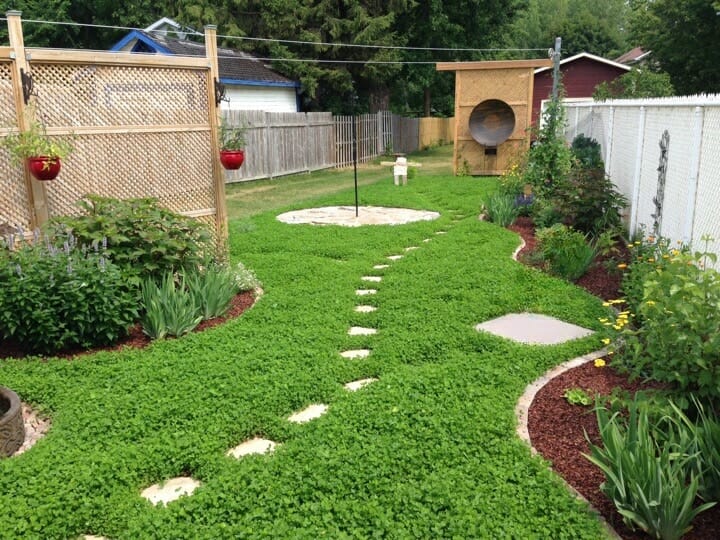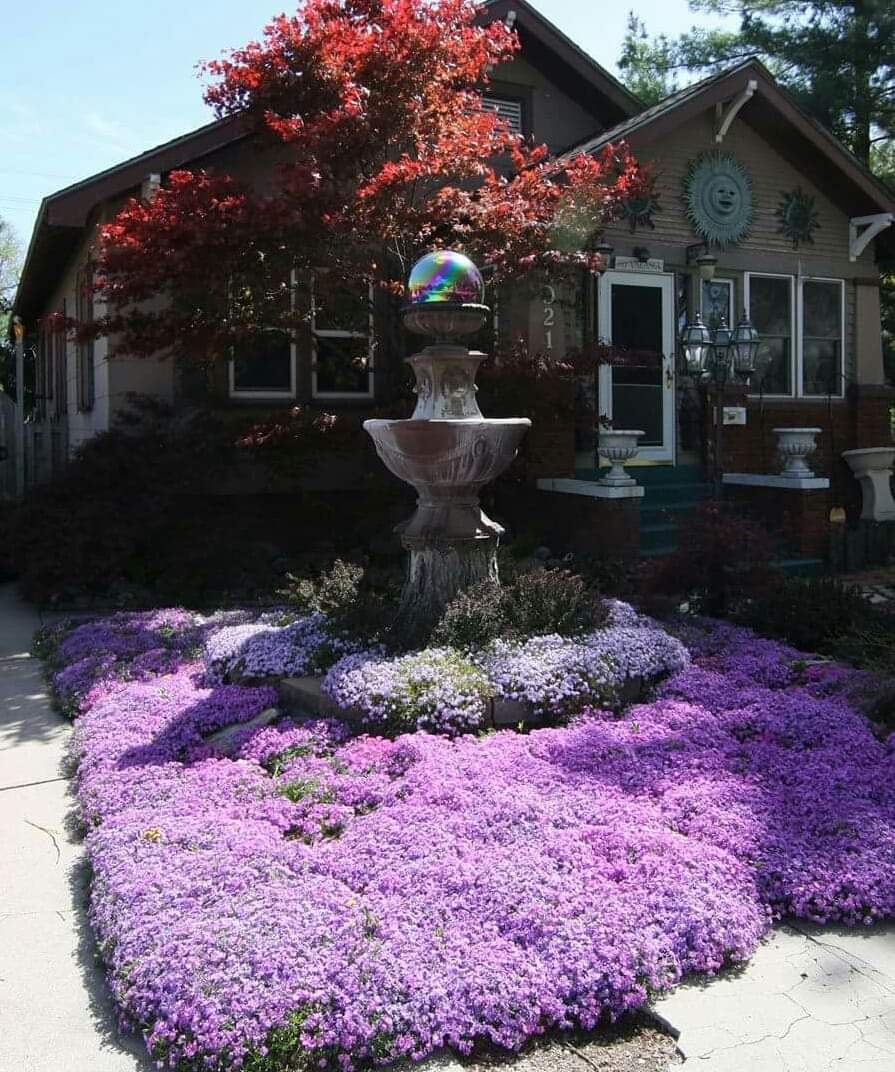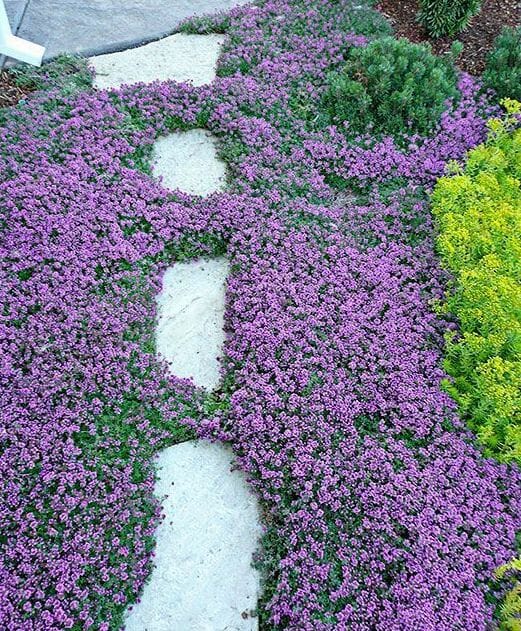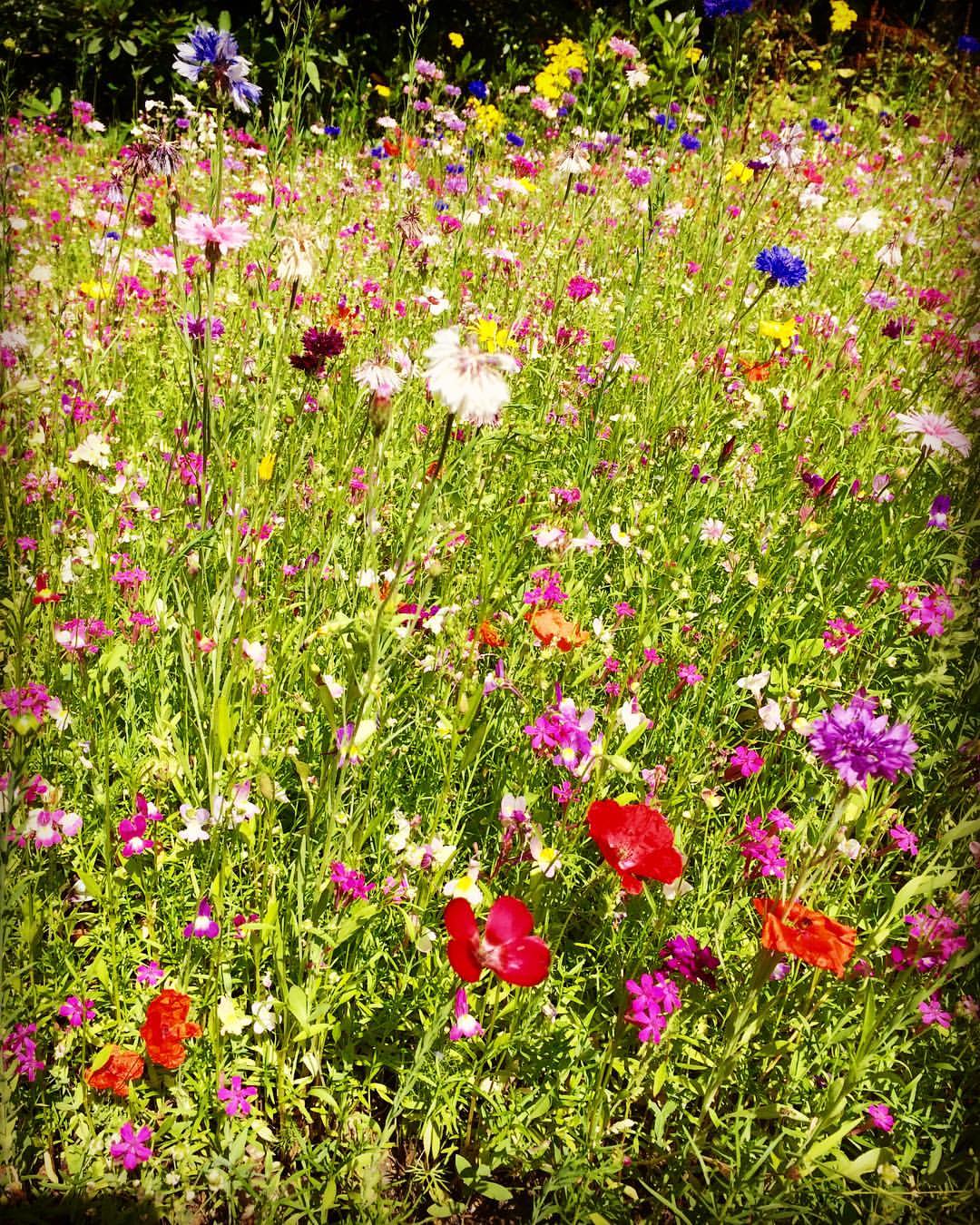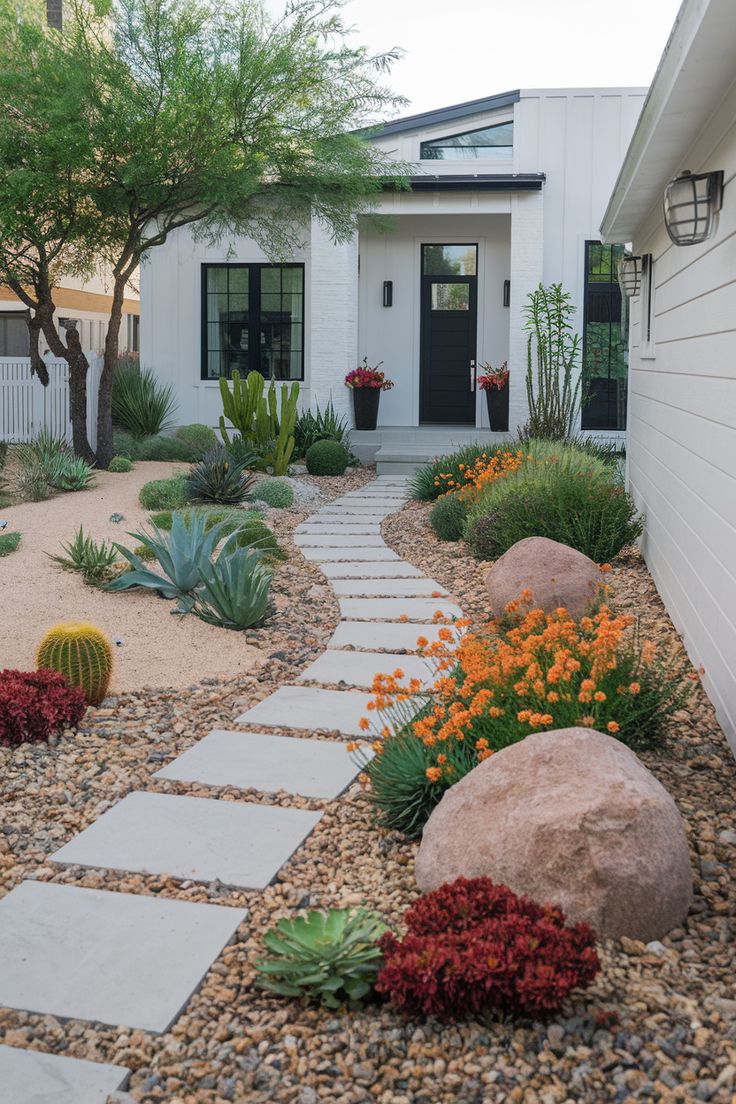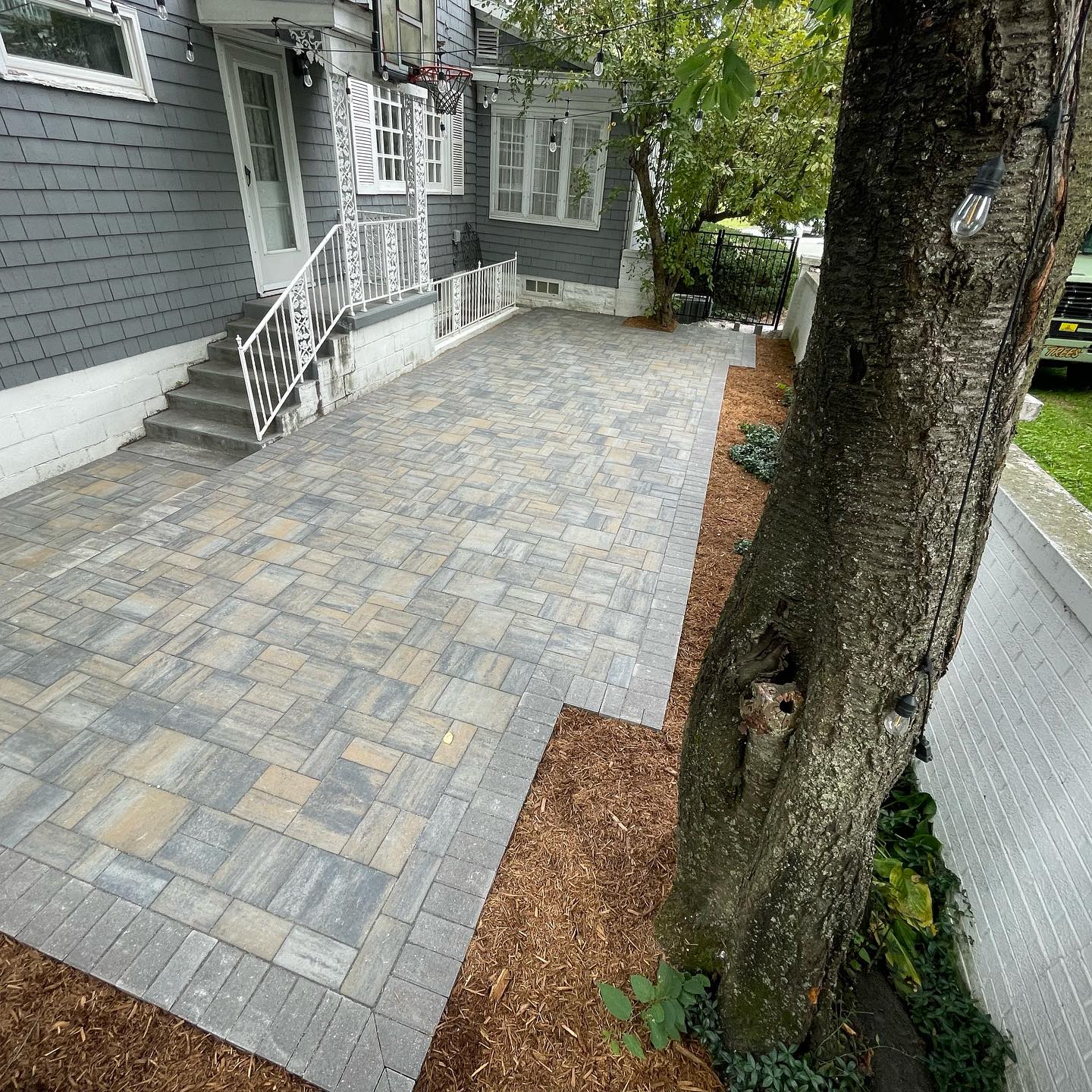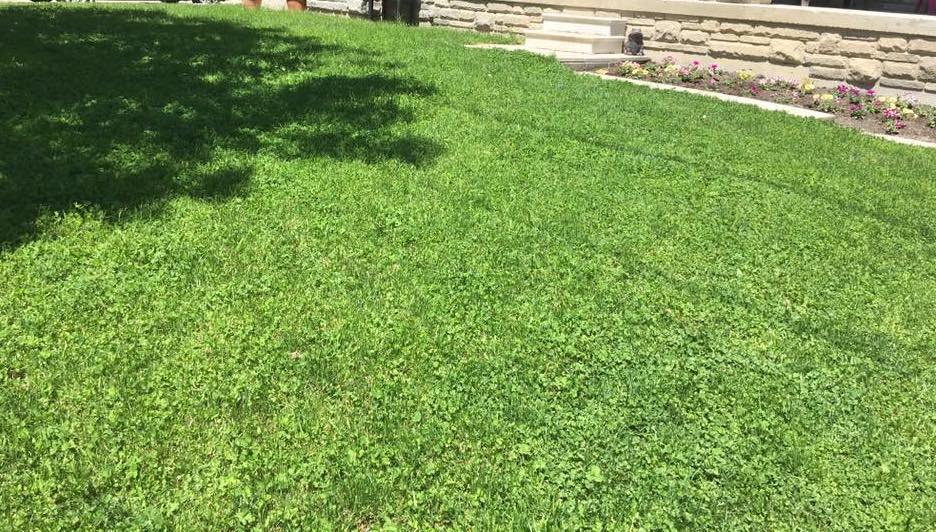The most commonly used ground cover for the back and front yards is grass, and if well-kept, it makes lawns beautiful, healthy, and perfect grounds to spend time outdoors.
Although traditional grass offers plenty of benefits, they also come with some disadvantages, so it makes sense to consider eco-friendly grass lawn alternatives.
Taking care of traditional grass is time-consuming and pricey, but you can find cost-effective, low-maintenance ground cover alternatives to grass.
It is also worth noting that developing the perfect lawn can come with an intense environmental cost.
So, if you are looking for eco-friendly grass lawn alternatives, keep reading to find practical options.
10 Cheap Alternatives to Grass Lawn
Here are the sustainable, beautiful options for grass you should consider for your lawn.
1. Ground Cover Ideas Instead of Grass
These are low-growing plants that require little or no fertilizer entirely that you can use to fill your lawn as ground cover alternatives to grass.
The best part is that you do not need to mow ground covers. There are ground covers for every yard style and region, from flowering perennials and springy moss to creeping evergreens.
Related posts:
Choose a ground cover that is native to your area to increase biodiversity and minimize maintenance. Additionally, stay away from invasive plants.
For instance, ajuga and creeping jenny are invasive in some parts of the United States.
Environmentally-friendly ground cover ideas instead of grass you should consider are:
1. Creeping phlox
Creeping phlox (Phlox subulata) is a popular alternative to traditional grass lawns due to its low-growing, spreading habit and vibrant, colorful blooms. This perennial ground cover forms a dense mat of evergreen foliage, producing an array of delicate, star-shaped flowers in various shades of pink, purple, and white during the spring.
Creeping phlox is hardy, drought-tolerant, and requires minimal maintenance. It thrives in full sun to partial shade and can be planted in rock gardens, borders, or on slopes to control erosion.
Read More: Cheap Ways To Cover Dirt In Backyard
2. Carpet Sedum/ Stonecrop
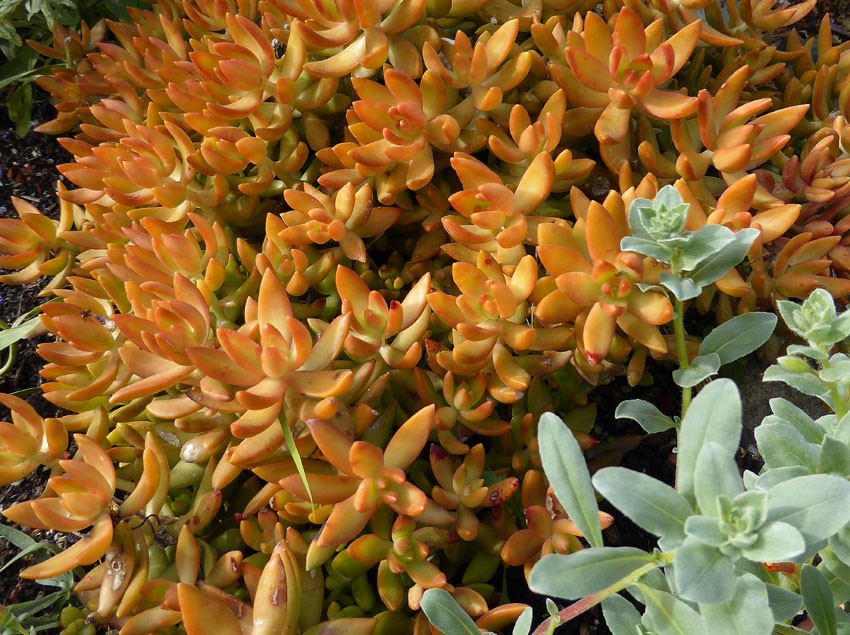
Carpet Sedum, also known as Stonecrop, serves as an eco-friendly alternative to traditional grass lawns. With its low-growing, dense mat of succulent leaves, it offers a visually appealing and low-maintenance option.
Its ability to withstand drought conditions and its resilience against foot traffic make it an ideal ground cover for various landscapes.
Additionally, carpet sedum lawn requires minimal water, reducing irrigation needs and conserving resources. This sustainable choice not only enhances the aesthetic appeal of outdoor spaces but also promotes biodiversity by attracting pollinators.
Ultimately, it provides a practical and environmentally conscious solution for those seeking to replace traditional grass lawns.
3. Corsican Mint
Corsican Mint (Mentha requienii) serves as a sustainable alternative to traditional grass lawns. This aromatic, low-growing herb thrives in partial shade and moist, well-drained soil.
Its compact nature eliminates the need for frequent mowing, reducing water consumption and maintenance efforts. Corsican Mint lawn releases a refreshing minty scent when stepped on, making it a delightful ground cover for walkways and paths.
The plant’s resilient nature ensures year-round greenery, and its ability to withstand foot traffic enhances its appeal. Embracing Corsican Mint as a lawn substitute promotes eco-friendliness, conserves resources, and adds a charming touch to outdoor spaces.
Also Read: Creeping thyme lawn
4. Creeping Thyme
Creeping Thyme is a low-growing, aromatic herb that can serve as an eco-friendly alternative to traditional grass lawns. This hardy and drought-tolerant plant forms a lush, dense carpet of green, adorned with tiny, colorful flowers, creating an attractive and fragrant groundcover.
Not only does it require minimal maintenance, but it also attracts pollinators like bees and butterflies, promoting biodiversity. Creeping thyme lawn can handle light foot traffic and release a pleasant fragrance when stepped on.
Its ability to thrive in various soil types and its resistance to pests make it an ideal, sustainable choice for those seeking an easy-to-care-for, environmentally friendly lawn substitute.
2. Wildflower Meadow
Wildflowers offer low-maintenance, gorgeous biodiverse powerhouses that do not need herbicides, fertilizers, or regular watering. You only need to mow a yard with wildflower meadows once annually.
However, establishing such a lawn is labor intensive but results in a dazzling space you, the neighbors, and even local wildlife will love.
It does best in sunny, open areas. Ensure your lawn has low traffic and pick high-quality flower mixture native to the region. Such a lawn is perfect for pollinators, lowers pollution, and promotes biodiversity.
3. Native Plants
Plants native to your area offer low-maintenance grass alternatives that help increase biodiversity and save energy.
They do not require fertilizer or regular fertilizing and need less watering than turfgrasses since they are adapted to the region.
Native plants give shelter and valuable food to bees, birds, and butterflies. The local extension service or the native plant finder of the National Wildlife Federation will help you discover the plants native to your location.
4. Rock Beds
A rock bed is a worthy candidate if you want to steer away from the standard plant-based lawn cover and go with a rather unique style.
Besides beautifying your yard, it will also lower fertilizer use, cut out mowing, and help conserve water.
You can create layer rocks and stone pathways for a multi-dimensional, statuesque look. Alternatively, encircle a boulder using sand, gravel, or succulents.
Popular rock garden elements include:
- Stepping stones
- Sand
- Natural boulders
- Gravel
- Ground covers resistant to drought
- Native perennials
- Ornamental grasses
- Succulents and cacti
Replacing traditional grass with plants resistant to drought if you live in dry regions will help you preserve natural resources and save some money.
Besides, rock beds are excellent covers for high traffic lawn alternatives.
5. Hardscapes
If you do not mind walking on hard ground, consider hardscape covers for your lawn. The options include:
- Paved pathways
- Fountains
- Fencing
- Outdoor kitchens
- Fire pits
- Decks
- Patio
Most hardscape surfaces do not let water penetrate the ground because they are impermeable. This forces stormwater runoff and increases air temperature by absorbing and re-emitting heat.
Luckily, you can find more environmentally-friendly hardscape choices, such as permeable pavers. While you will spend more money to install them compared to traditional forms but the aquatic ecosystems will not be polluted by stormwater.
Also, pick hardscapes with excellent solar reflectance to curb the heat island effect.
6. Micro Clover
Growing a micro clover lawn is an excellent choice as alternatives to a grassy lawn. It requires little watering, is resistant to drought, does not need mowing (you can cut it sometimes to keep it short, though), pesticides, and fertilizers, and stays green for much longer than traditional grass.
You can grow micro clover in poor soil. Besides, it naturally fertilizes and improves the soil via nitrogen fixation. It is cheaper than grass and grows densely, thus crowding out and preventing weeds.
When it comes to alternatives to grass for dogs, micro clover is pet friendly. Your dogs will love running around on such a lawn, and their urine does not leave ugly patches.
7. Rewilding or Ungardening
This approach entails leaving things to grow naturally, which may not seem like such a great idea to most people. However, you can do the following:
- Landscape your lawn with plants, flowers, or native grasses with the plan to let the vegetation grow with no or minimal maintenance.
- Let nature do its thing and see how it unfolds. However, keep invasive plants at bay and encourage native ones to grow. Also, check the local laws to ensure you will not incur fines or break the rules by keeping your yard vegetation too high.
8. Grow Food
Instead of growing traditional grass in your yard, you can establish a vegetable garden. The beauty is you will have vegetables and even fruits to eat.
9. Bee Turf
West Coast Seeds developed bee turf, a mixture of low wildflowers and clovers, to lower maintenance expenses and offer pollinators a healthy habitat. Bee turf can be excellent vegetation to cover your lawn.
It is green and lush even in summer and produces delightful tiny flowers.
You can trim bee turf monthly to keep it shorter and make sure your yard looks manicured. Alternatively, you can let it grow naturally without maintenance work to achieve a flowered pasture appearance.
10. Evergreen Moss
Gardeners and homeowners typically consider moss a nuisance, especially if it grows under trees, but it can offer excellent cover for your yard.
Evergreen moss stays green all year round, grows practically in any soil, and flourishes in the shade.
It is low-maintenance and offers a soft carpet; you will feel heavenly walking on it. You do not need to water, mow, fertilize, apply pesticides, or weed evergreen moss; just enjoy your lawn.
Moss comes in different varieties. Below are the options to consider:
- Acrocarp varieties like Luecobryum glaucum, Campylopus introflexus, Dicranum scoparium, and Polytrichum commune.
- Pleurocarp varieties such as Plagiomnium cuspidatum, Hypnum imponens, Entodon seductrix, Bryandersonia illecebra, Thuidium delecatulum, Climacium americanum,and Hypnum cupressiforme. These types spread out to form a flat, thick carpet.
Best Alternatives to Grass by Regions in The United States
Below are the best alternatives for grass for different areas.
a) Pacific Coast
Lawn ground covers are available in various colors and textures for regions on the Pacific coast. Some have berries and flowers, with many allowing high foot traffic. You can also use hardscapes like wood, concrete, and rocks for patios and pathways.
b) Northeast
Ground cover native to northeast regions of the USA includes moss phlox (sprouts white or pink flowers during spring) and white ginger.
You can also go for ornamental grass or edible landscaping that has in-ground gardens or elevated bed gardens.
Another form of ground cover to consider is Georgia Blue Veronica which is durable, needs little maintenance, and is low-growing. When spring comes, you will get to enjoy its beautiful blue flowers.
c) Midwest
If moss grows wholeheartedly in your lawn, let it provide ground cover and make the place aesthetically appealing. It thrives in damp, shady areas.
d) Southwest
It is wise to consider alternatives to grass if you live in the southwest United States. This is because the western states keep having extreme droughts, so converting your lawn into a drought-tolerant landscape is an excellent idea.
Using native plants and succulents with rock gardens or gravel can help reduce runoff, conserve moisture, and filtration.
A cheap alternative to lawn grass saves you from struggling to keep your grass alive in a water-conservative area.
e) Southeast
Consider a wildflower blend that suits your home’s climate. Ensure no vegetation that will deprive your wildflowers of water and sunshine are present in your lawn.
The common choices are perennial peanut, Asiatic jasmine, and sunshine mimosa since they are drought-tolerant.
Final Remarks
You do not have to stick with standard grass on your lawn when there are a plethora of cheap alternatives to grass lawn. However, environmentally-friendly options do not have to be boring since there are exciting, pretty choices like wildflower meadows.

Hey there, I’m Derek Schew, a writer for Lawnholic.com, where we cover everything and anything related to lawns. As someone who’s spent countless hours tending to my own lawn, I’m passionate about sharing my knowledge and helping others achieve the perfect yard. From lawn care tips to product reviews, I’m committed to providing our readers with the most accurate and up-to-date information available. So whether you’re a seasoned lawn enthusiast or just getting started, I invite you to join our community and discover the joys of a lush, green lawn.

